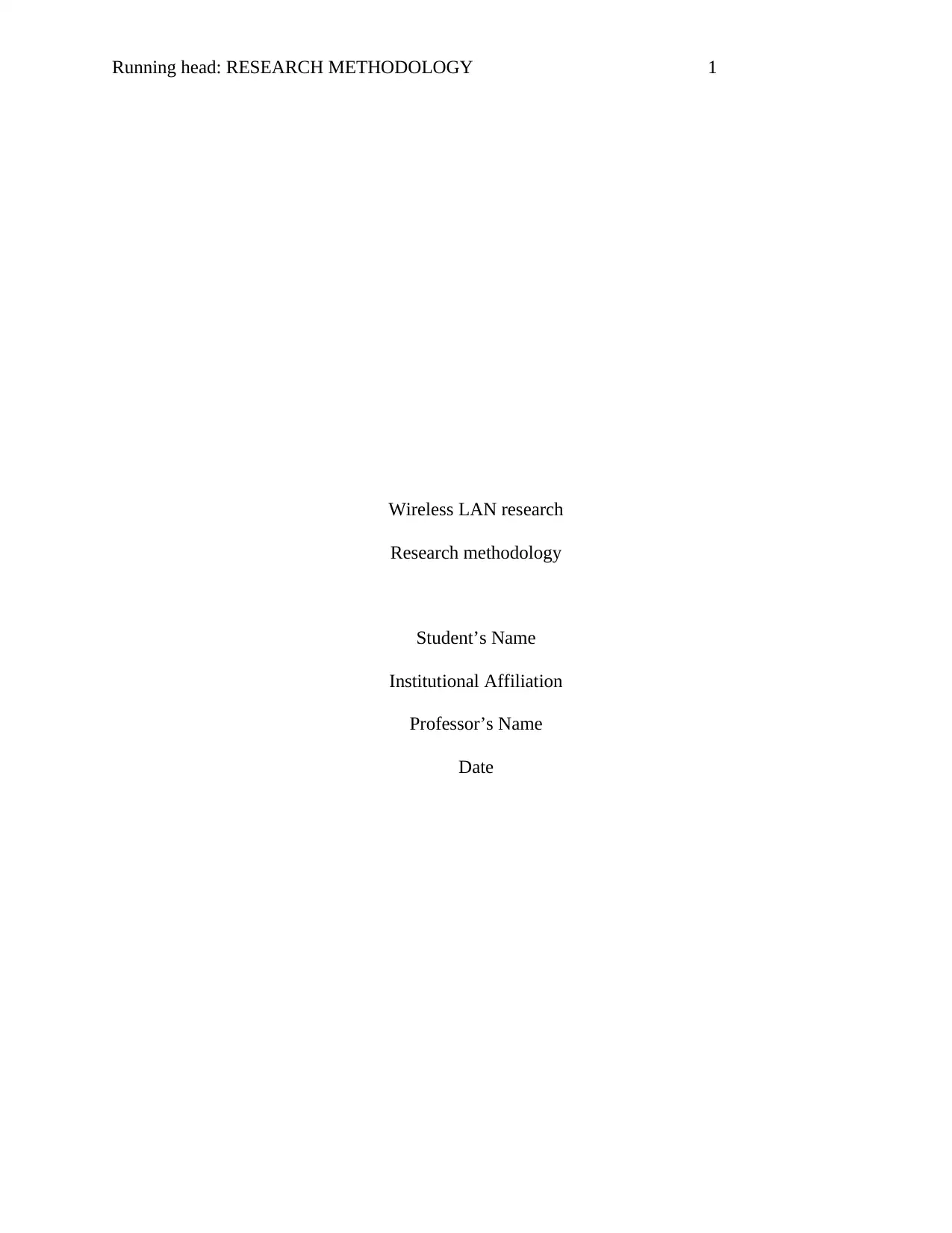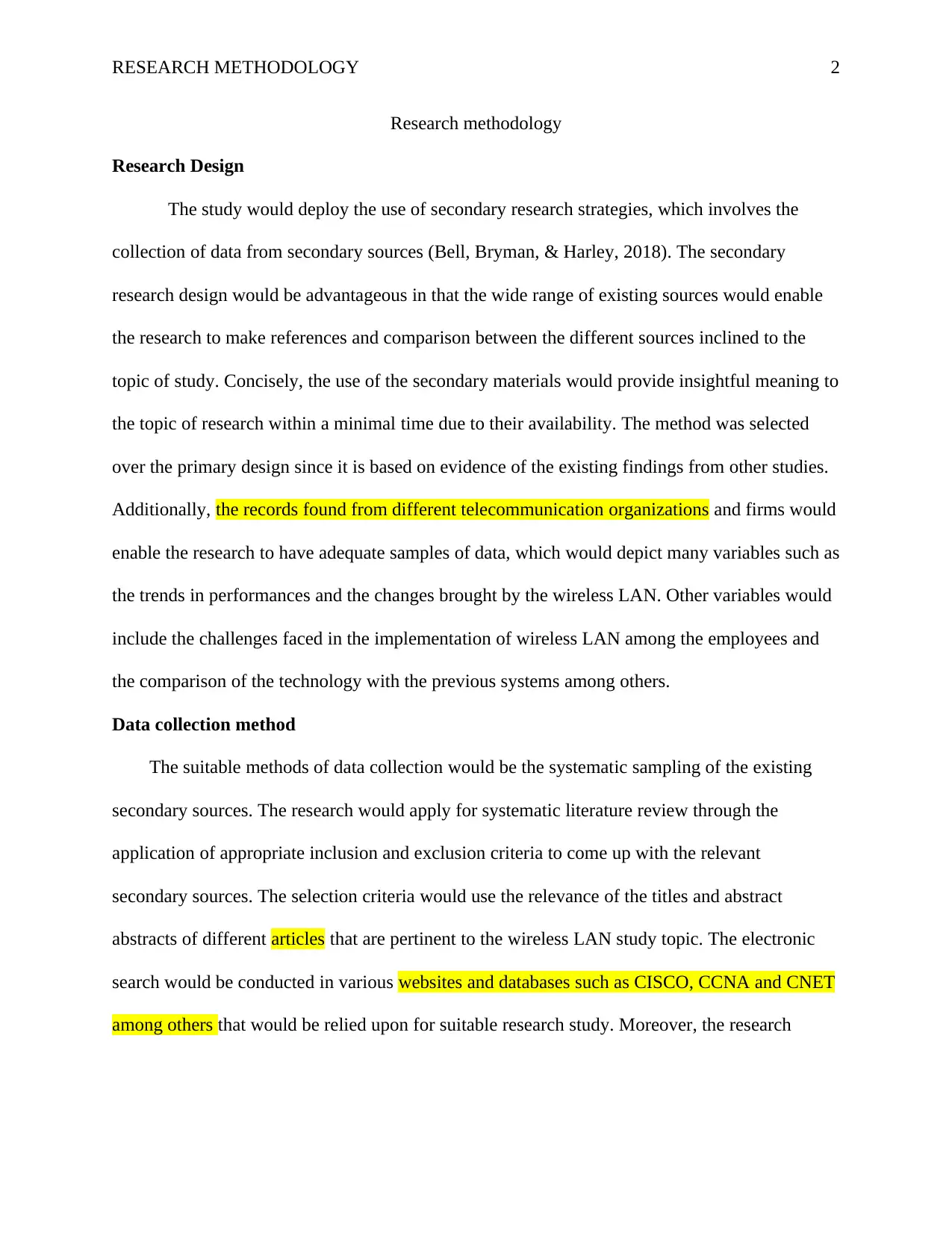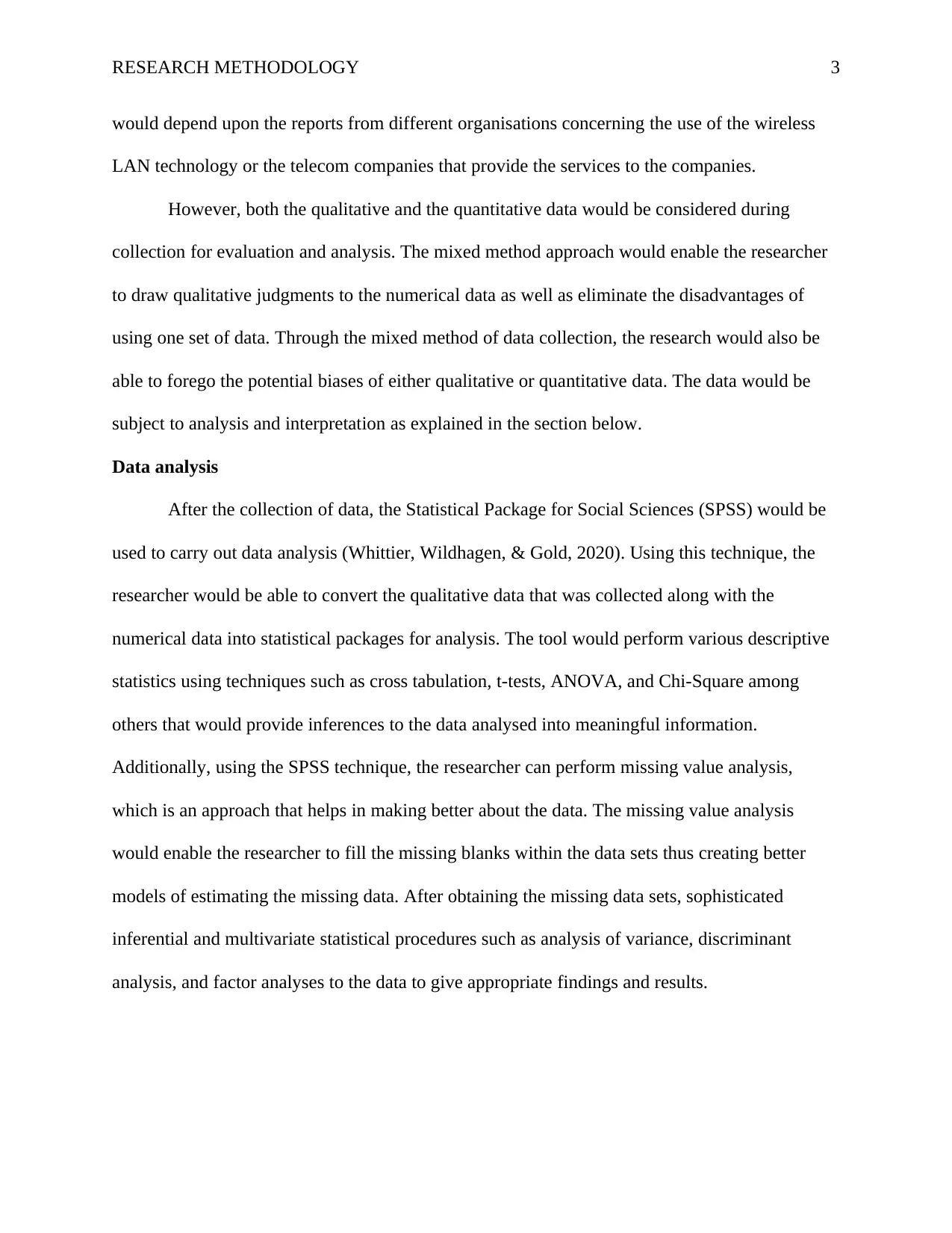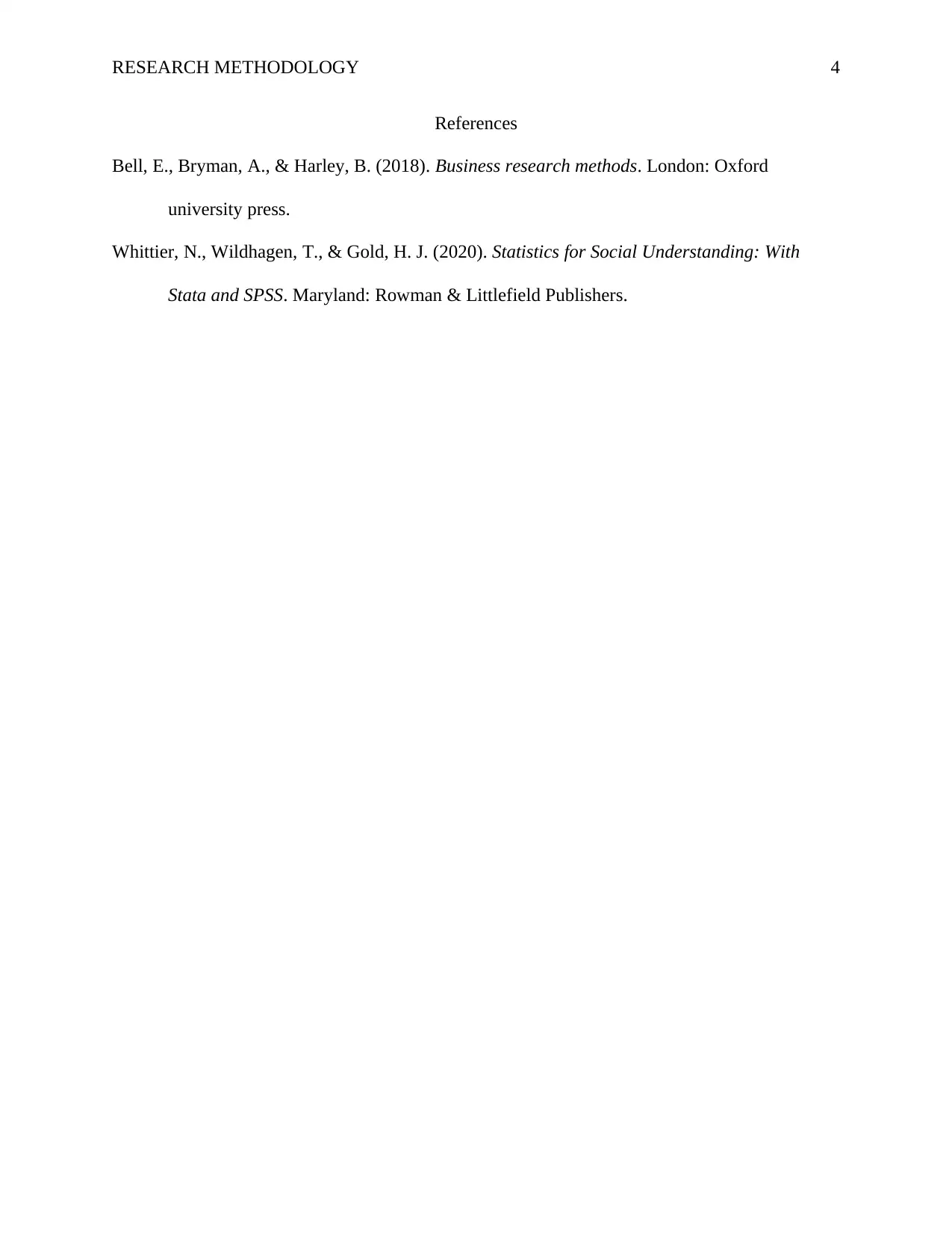Comprehensive Research Methodology Report: Wireless LAN Analysis
VerifiedAdded on 2023/01/11
|4
|695
|35
Report
AI Summary
This report outlines the research methodology employed for a Wireless LAN study. The research design utilizes secondary research, drawing upon existing sources to analyze trends, challenges, and comparisons related to wireless LAN technology. Data collection involves systematic sampling of secondary sources, including websites like CISCO and CCNA, and reports from telecommunication companies. Both qualitative and quantitative data are considered, with a mixed-method approach to mitigate potential biases. Data analysis is conducted using the Statistical Package for Social Sciences (SPSS), enabling the conversion of qualitative data into statistical packages for analysis. The SPSS technique facilitates descriptive statistics, missing value analysis, and advanced inferential and multivariate statistical procedures to derive meaningful findings and results. The report emphasizes the importance of data interpretation and the application of statistical tools to draw insightful conclusions about the wireless LAN landscape.
1 out of 4











![[object Object]](/_next/static/media/star-bottom.7253800d.svg)